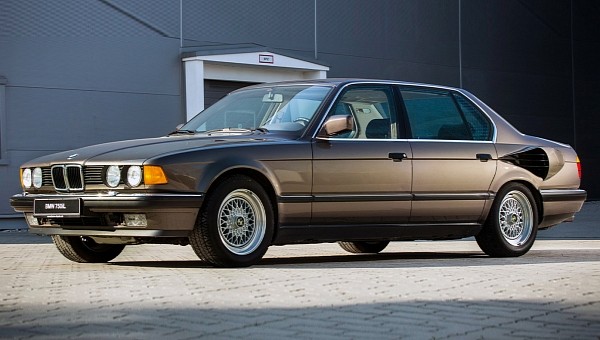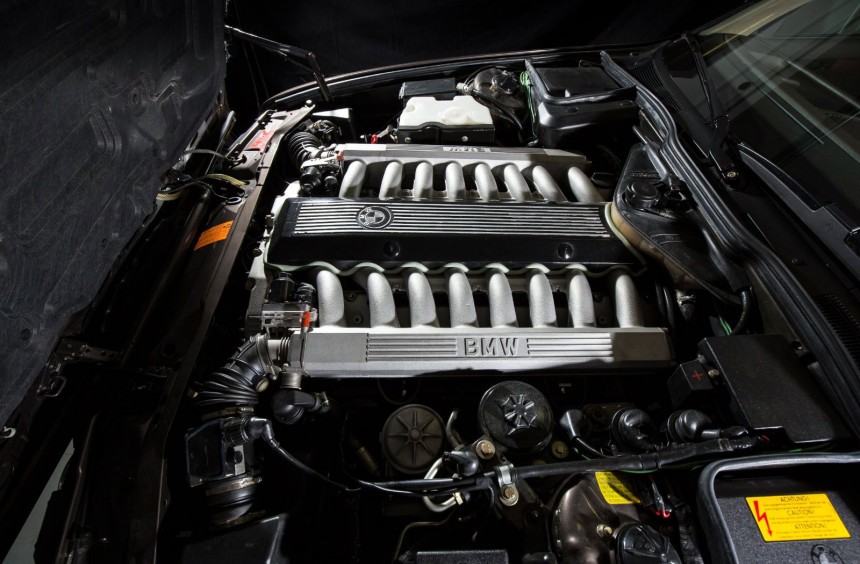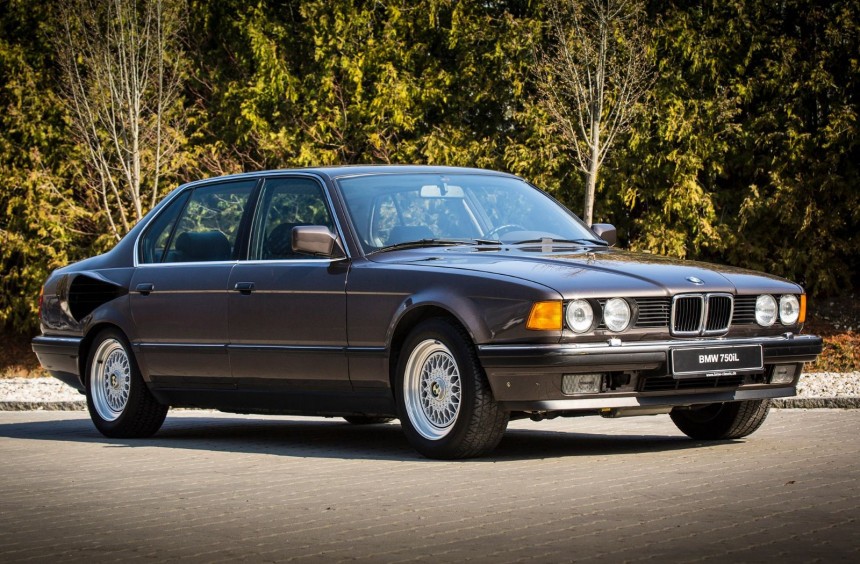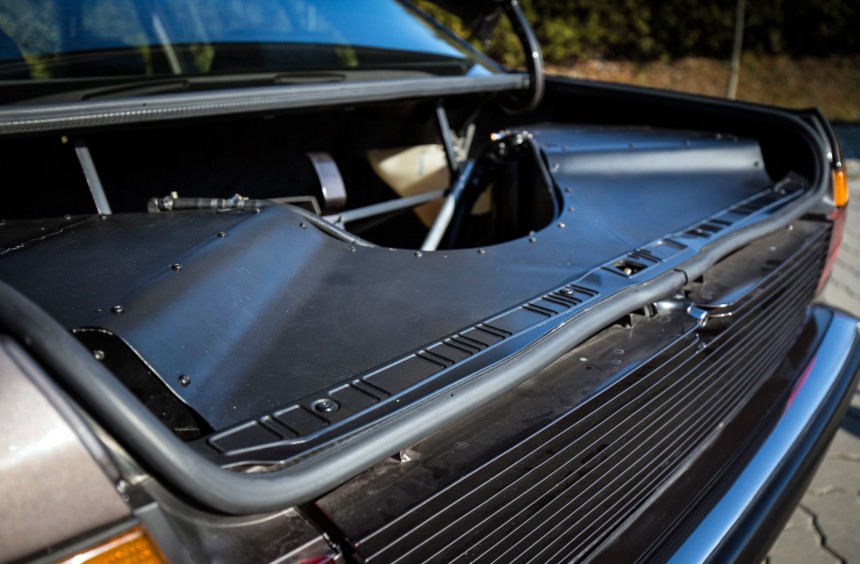Like all other carmakers, the folks at BMW are currently focusing on downsizing and electrification. However, 35 years ago, when the industry was far less boring, the Bavarians built an experimental V16 engine and stuffed it in a 7 Series.
For most of us old-school car enthusiasts, there’s nothing more exciting than a V-shaped engine. Eight cylinders are cool, ten are even better, whereas twelve borders perfection. But what about sixteen?
Some will say it’s overkill while others will say: hell yes! Well, throughout history, several carmakers have developed a V16 engine, but this configuration never reached the popularity of its smaller siblings.
The first mass-produced V16s meant for automobiles were born in the USA. The long-defunct Marmon Motor Car Company was the first to begin development back in 1927. But Cadillac was the first to release one on the market three years later.
In modern times, the Cizeta-Moroder V16T was the only production car to use such an engine. Of course, Bugatti also builds a famous sixteen-cylinder, but it uses the VW Group’s proprietary W configuration instead of a conventional V.
During the second half of the 1980s, BMW also flirted with the idea of mass-producing a V16, going as far as developing one and testing it inside its flagship sedan.
Throughout its 107-year history, the German manufacturer has created many outstanding engines that came in various configurations. But, if we had to choose one that’s synonymous with BMW, that would undoubtedly be the inline-six.
One of the company’s most famous six-cylinders was the SOHC M20. Designed during the 1970s, it powered nearly all of BMW’s models for more than 25 years. It also served as the building block for the brand’s first production V12, the mighty M70.
In the summer of 1987, while they were prepping the M70 V12 for mass production, the German engineers were also experimenting with the minimum and maximum potential of the M20-derived architecture. This led to the development of a small three-cylinder, but also an intriguing V16.
Codenamed Goldfisch (goldfish, in German), the all-aluminum, naturally-aspirated engine only displaced 6.7 liters, so it wasn’t as humongous as you would expect. Weighing 683 lbs. (310 kg) without fluids, it redlined at 6,000 rpm, while its maximum output was rated at 402 hp (408 ps) and 452 lb-ft (613 Nm) of torque. These figures don’t mean much today, but back then it was a healthy improvement over the M70 V12. Better yet, the rivals at Mercedes-Benz didn’t have a V16, so development continued.
While the S-Class used to be the unrivaled king of full-size luxury sedans, BMW’s 1987 E32 7 Series was conceived to dethrone it. Apart from being far more technologically advanced than the W126 Merc, it was also more powerful thanks to the addition of the aforementioned V12 engine.
But word had gotten out that Mercedes was developing its own V12 for the upcoming W140 S-Class so, to maintain a technological edge, the Bavarians researched the feasibility of a V16-powered 7 Series.
With the Goldfisch engine fully developed and tested in the early months of 1988, engineers took a long wheelbase 750iL off the assembly line, removed its V12, and proceeded to install the sixteen-cylinder. However, they soon found out that the swap wouldn’t be a simple process, since the experimental unit was just too wide for the E32’s engine bay.
For more than three months, engineers had to extensively modify the bay and front subframe to squeeze in the new motor. They eventually succeeded, but a few compromises had to be made. For instance, there was no room for the radiator, so it had to be rerouted and fitted inside the trunk. This required several other modifications such as a redesigned lid, new taillights that flanked a rear grille and a huge air duct on each quarter panel.
Nicknamed Secret Seven, the V16-powered E32 was presented to management in the spring of 1988 and was extensively tested in the months that followed. It showed a lot of promise, accelerating from 0 to 62 mph (100 kph) in a little over 6 seconds and reaching a top speed of 175 mph (282 kph). However, with diminished trunk space and those huge side vents, it was too impractical and looked too goofy for mass production.
Engineers and designers attempted to solve these issues. But there was simply not enough room for the V16 in the E32 chassis. Studies showed that the cooling system could only fit inside the engine bay if the whole front fascia had been redesigned. This would have exponentially increased production costs and, in consequence, a mass-produced, V16-powered E32 would have been way too expensive.
The Goldfisch was also tested in a prototype Bentley Mulsanne, a car with a larger engine bay that accommodated the engine and its ancillaries with ease. Back then, BMW was supplying engines to Bentley and Rolls-Royce (who were both owned by Vickers). If the Germans couldn’t make the V16 work in their own luxury sedan, they attempted to cash in on their experimental engines by selling it to the Britons. However, the engine was deemed too complex and expensive for Bentley.
Even if it didn’t make it into production, the sixteen-cylinder-powered E32 remains one of the most outrageous BMW prototypes of the 1980s. You can learn more about it in the YouTube video below by HSG Automotive.
Some will say it’s overkill while others will say: hell yes! Well, throughout history, several carmakers have developed a V16 engine, but this configuration never reached the popularity of its smaller siblings.
The first mass-produced V16s meant for automobiles were born in the USA. The long-defunct Marmon Motor Car Company was the first to begin development back in 1927. But Cadillac was the first to release one on the market three years later.
In modern times, the Cizeta-Moroder V16T was the only production car to use such an engine. Of course, Bugatti also builds a famous sixteen-cylinder, but it uses the VW Group’s proprietary W configuration instead of a conventional V.
During the second half of the 1980s, BMW also flirted with the idea of mass-producing a V16, going as far as developing one and testing it inside its flagship sedan.
From six to sixteen cylinders
One of the company’s most famous six-cylinders was the SOHC M20. Designed during the 1970s, it powered nearly all of BMW’s models for more than 25 years. It also served as the building block for the brand’s first production V12, the mighty M70.
In the summer of 1987, while they were prepping the M70 V12 for mass production, the German engineers were also experimenting with the minimum and maximum potential of the M20-derived architecture. This led to the development of a small three-cylinder, but also an intriguing V16.
Codenamed Goldfisch (goldfish, in German), the all-aluminum, naturally-aspirated engine only displaced 6.7 liters, so it wasn’t as humongous as you would expect. Weighing 683 lbs. (310 kg) without fluids, it redlined at 6,000 rpm, while its maximum output was rated at 402 hp (408 ps) and 452 lb-ft (613 Nm) of torque. These figures don’t mean much today, but back then it was a healthy improvement over the M70 V12. Better yet, the rivals at Mercedes-Benz didn’t have a V16, so development continued.
Squeezing it into a 7 Series
But word had gotten out that Mercedes was developing its own V12 for the upcoming W140 S-Class so, to maintain a technological edge, the Bavarians researched the feasibility of a V16-powered 7 Series.
With the Goldfisch engine fully developed and tested in the early months of 1988, engineers took a long wheelbase 750iL off the assembly line, removed its V12, and proceeded to install the sixteen-cylinder. However, they soon found out that the swap wouldn’t be a simple process, since the experimental unit was just too wide for the E32’s engine bay.
For more than three months, engineers had to extensively modify the bay and front subframe to squeeze in the new motor. They eventually succeeded, but a few compromises had to be made. For instance, there was no room for the radiator, so it had to be rerouted and fitted inside the trunk. This required several other modifications such as a redesigned lid, new taillights that flanked a rear grille and a huge air duct on each quarter panel.
Too outlandish for mass production
Engineers and designers attempted to solve these issues. But there was simply not enough room for the V16 in the E32 chassis. Studies showed that the cooling system could only fit inside the engine bay if the whole front fascia had been redesigned. This would have exponentially increased production costs and, in consequence, a mass-produced, V16-powered E32 would have been way too expensive.
The Goldfisch was also tested in a prototype Bentley Mulsanne, a car with a larger engine bay that accommodated the engine and its ancillaries with ease. Back then, BMW was supplying engines to Bentley and Rolls-Royce (who were both owned by Vickers). If the Germans couldn’t make the V16 work in their own luxury sedan, they attempted to cash in on their experimental engines by selling it to the Britons. However, the engine was deemed too complex and expensive for Bentley.
Even if it didn’t make it into production, the sixteen-cylinder-powered E32 remains one of the most outrageous BMW prototypes of the 1980s. You can learn more about it in the YouTube video below by HSG Automotive.
















